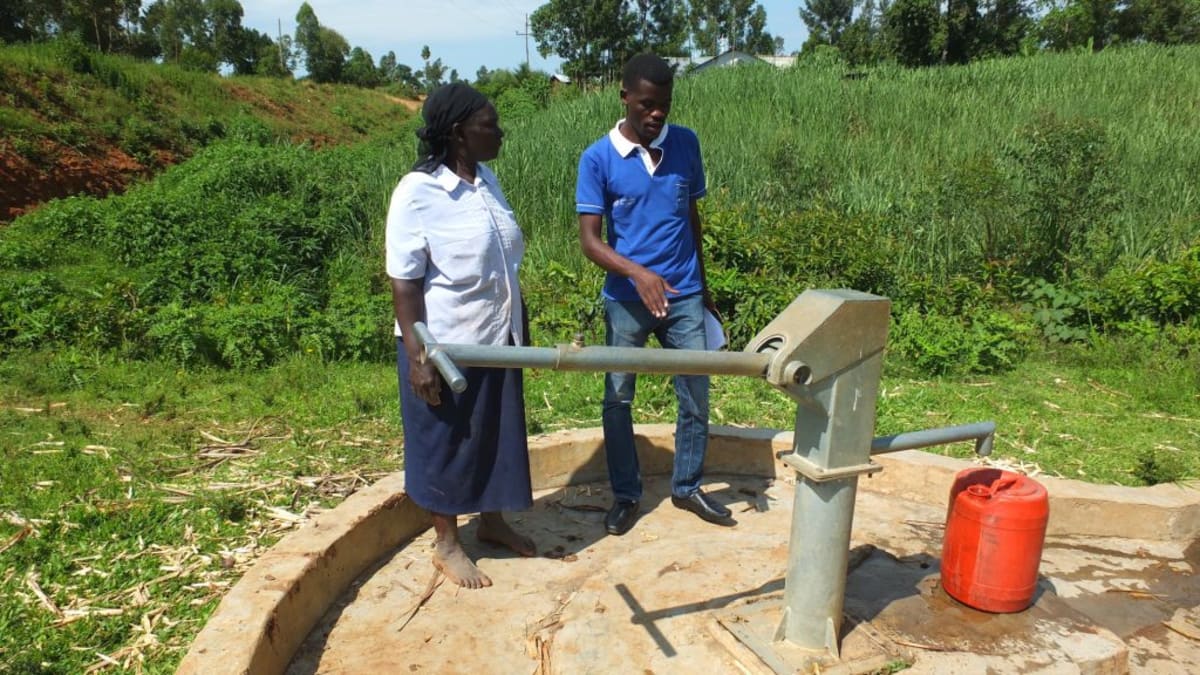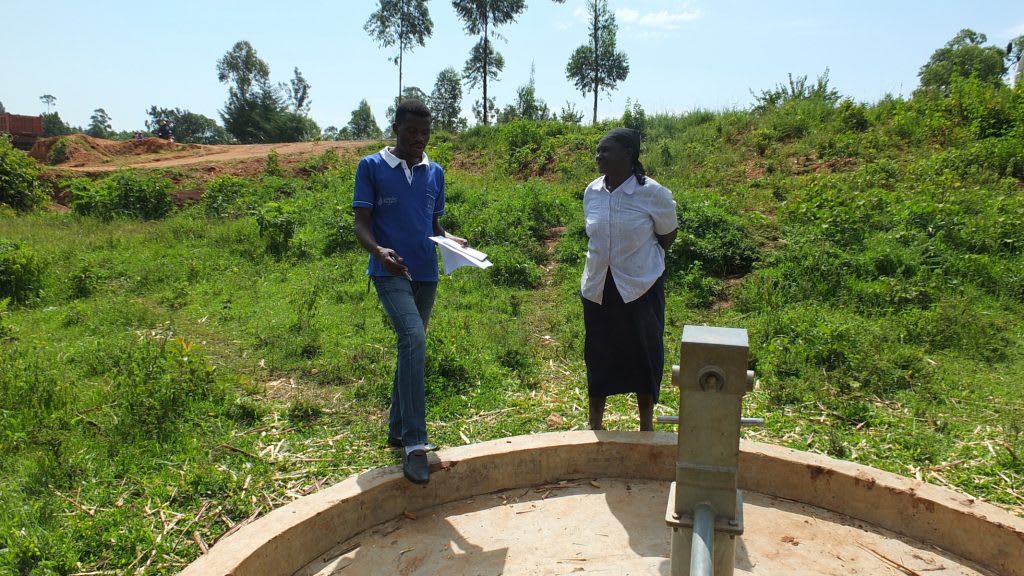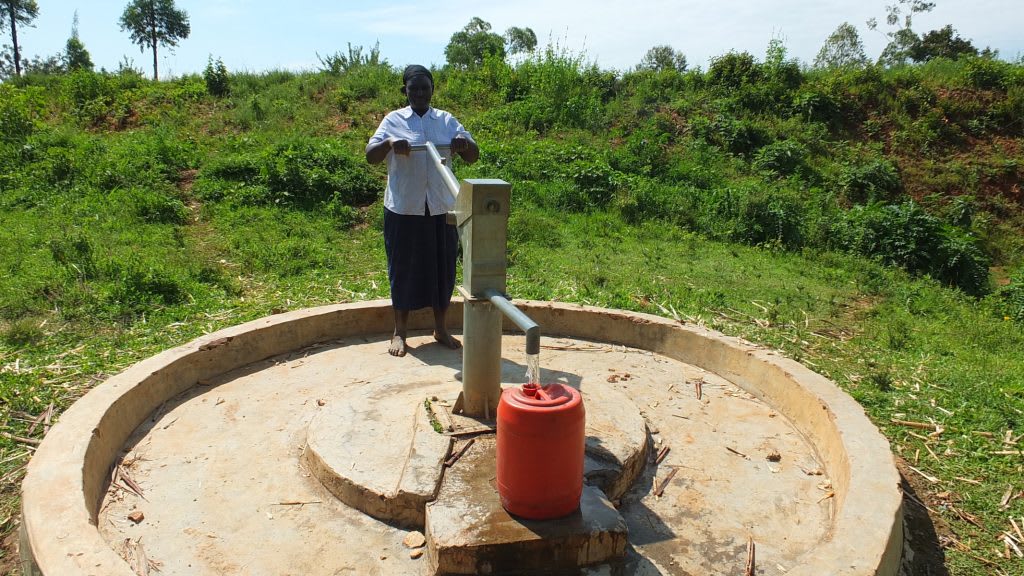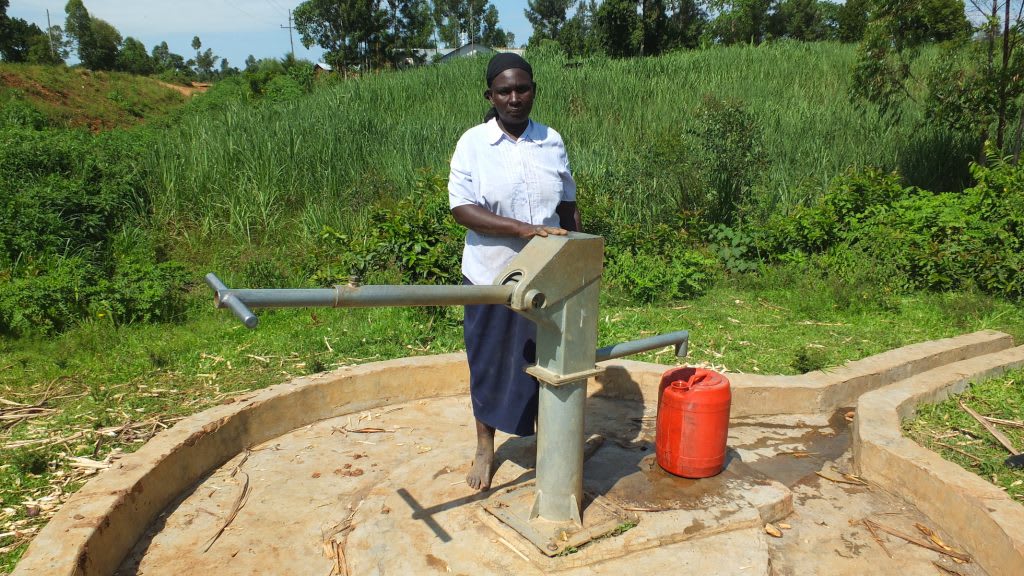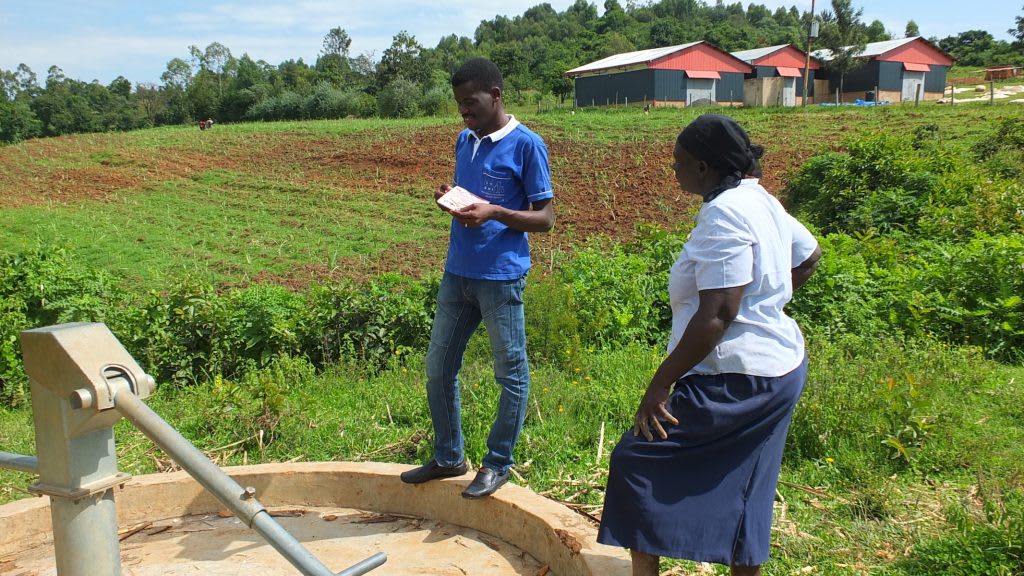This project is a part of our shared program with Safe Water and Sustainable Hygiene Initiative (SAWASHI). Our team is pleased to directly share the below report (edited for clarity, as needed).
Background Information
Kwambiha Community is located in the northern part of Kakamega County in Malava Sub-County. The community is surrounded by sugarcane plantations, because sugarcane is the main cash crop in this area. This community is united in beliefs and culture.
The Current Source
In 1989, Kenya Finland Company implemented a hand-dug well with the aim of helping community members, especially women and children, access clean and safe water They also looked to improve the community's poor hygiene and sanitation condition.
The well served the community until 1995 when it broke down. The water committee in place at that time made several attempts to repair the pump with the little money they had, but all was in vain. After their efforts, the pump was vandalized and its parts stolen by unknown persons. Community members were forced to go back and get water from unreliable sources that are also contaminated. This has resulted to outbreaks of waterborne diseases, especially typhoid and diarrhea for elderly people and children of ages five to ten.
One of these sources is an unprotected spring (please note that in the pictures this spring may appear protected, but in fact only a catchment area has been constructed for easy access) over 2 km away. It takes people over 30 minutes to get to the spring, let alone fetch the water once they're there. The spring's water is contaminated by runoff sourcing from uphill latrines. Furthermore, it was obvious that the buckets and jerrycans brought to the spring are rarely cleaned and thus further contaminate the water. Once home, families are not aware of the methods they can adopt before drinking this water. Treating the resulting diseases has cost these families a lot of money that was meant for food and education.
The community applied to SAWASHI, and after their initial survey, SAWASHI deemed this well viable for rehabilitation. There should be sufficient water accessible year round.
Sanitation Situation
75% of households in Kwambiha Village have dug pit latrines. These latrines often have three walls for privacy, but no door to cover the entrance. Nor is the pit itself covered, making it very easy for flies to enter and leave carrying dangerous waste. The flies attracted to the latrines are the same flies attracted to the kitchen.
It was observed that no households have hand-washing facilities, and no more than 75% have helpful tools like dish racks or clotheslines. Fortunately, most households have a designated place to dump their family’s waste within their own compounds.
Training Sessions
Community members of Kwambiha Village will be recruited to attend training for three days. On the first two days, the facilitator will focus on hygiene and sanitation practices. On the third day, the community and partner will work together to form and educate a water user committee. This committee will manage and maintain their community well. The facilitator plans to use the PHAST (participatory hygiene and sanitation training) method and group discussions to teach health topics. By the end of training, community members will realize the importance of good hygiene and sanitation and will be able to apply new practices throughout their daily routines. The facilitator will also address negative attitudes about these practices, proving that they are worth the time and effort. Some of the community members are willing to attend the hygiene and sanitation trainings while others are still undecided.
There is great hopefulness for the success of this project, because there is a lot of local government involvement. The assistant chief and the village elders from this area have played a crucial role in mobilizing community members, especially by creating awareness on issues related to water. They also look forward to these same government leaders taking part in the water user committee.
With the zeal and commitment of our team bonded together with the cooperation of community members and their leaders, we hope to overcome any challenges in helping the community have access to safe water.
Results: Training
Training for Kwambiha Community was held at the assistant chief's office. Locals thought it the best place since it is known to all and centrally located for all. It was also convenient because of the assistant chief's great participation in this project; he was responsible for making sure at least one representative from every household attended the training.
The facilitator was very happy with participation all three days. Both men and women were active in asking questions about how to apply good health practices to their own households. They discussed the following topics:
- General household hygiene
- Proper hand-washing
- Food preparation and its storage
- Water treatment methods and storage
To teach the above topics, the facilitator encouraged members to discuss their perspectives and experiences in groups. They also passed out pictures that illustrated both good and bad habits, and groups had to define these and present them to others. The facilitator demonstrated hand-washing and then allowed each person the chance to practice in front of others. Practice makes perfect!
After training, community members were very grateful with the education they received. Kwambiha farmer Mr. Odiko said, "Without water there is no life, we are happy to get knowledge of how to handle water. We did not have idea of proper hygiene and sanitation. We have been living a life of ignorance and attitude."
Results: Construction
Rehabilitation of this hand-dug well presented no challenges. Work began on February 9 and finished a couple days after. The construction team began by using hammers and mallets to demolish the old well pad that was allowing contamination. Once fully removed, the men could re-plaster a new well pad made of a sand, water, and cement mixture. Final plastering was done to ensure there were no cracks or chance of recontamination. All the while, community members showed their gratefulness by providing food for the construction team.
The community is glad to have their water source in place. The water committee has been formed and strengthened by our team and will be responsible for the care and maintenance of the water source. They have also owned the water project for themselves, referring to it as "our well," unlike initially when they used to refer to it as Kenya Finland Company's well. Farmer Jacob Lubasu said, "We thank the SAWASHI team for rehabilitating our water source. We are going to take care for our water system so as to help our future generation."
The people of Kwambiha Community, The Water Project, and SAWASHI Thank You for renewing this water source.

 Protected Dug Well
Protected Dug Well

















